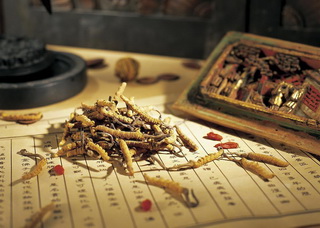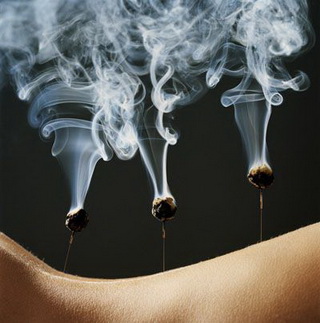
 China Tours
China Tours Tibet Tours
Tibet Tours China Theme Tours
China Theme Tours Off The Beaten Track
Off The Beaten Track Yangtze Cruises
Yangtze Cruises China Trip Planner
China Trip Planner Travel Agents
Travel Agents


We had a wonderful time in Tibet. We have learned a lot about this unique destination because of the wonderful guide Degyi who is so knowledge and always available towards our tours. We stayed at the Shangri-La Hotel Lhasa, and we would never imagine a Tibet travel could be so nice and amazing without the help of Degyi.
Also, thanks a lot to our Tibetan driver Mr.Wongdun for his safe driving and a good sense of service along the way.
We shall return Tibet in the near future!
P.B. and A. A - Europe
Tibet Travel
June 2018 (Private Tibet Journey from Kathmandu)

 Chinese medicine and pharmacology are important component parts of China's splendid national culture. Chinese medicine and pharmacology have made tremendous contributions to China's prosperity throughout the country's history of several thousand years. They are noted worldwide for their outstanding curative effects, strong national character, unique method of diagnosis and treatment, systemic theories and vast accumulation of historical records and materials, making it common wealth of the medical treasure-house of mankind. Chinese medicine and pharmacology have shown great vitality for several thousand years. They are also a valuable complement to the modern techniques of medicine and pharmacology.
Chinese medicine and pharmacology are important component parts of China's splendid national culture. Chinese medicine and pharmacology have made tremendous contributions to China's prosperity throughout the country's history of several thousand years. They are noted worldwide for their outstanding curative effects, strong national character, unique method of diagnosis and treatment, systemic theories and vast accumulation of historical records and materials, making it common wealth of the medical treasure-house of mankind. Chinese medicine and pharmacology have shown great vitality for several thousand years. They are also a valuable complement to the modern techniques of medicine and pharmacology. The origin of traditional Chinese medicine and pharmacology can be traced back to primitive society. Medicine was originally created in the struggle against Nature by the ancient Chinese. In the course of food gathering, they found that some food items could alleviate the symptoms of or cure diseases. That was the origin of TCM. When the ancient Chinese lit fires to warm themselves, they also found that heated stones and sand wrapped in animal skin or bark could reduce pain. Through repeated practice and improvement, moxibustion methods were gradually developed. In the process of using stone instruments they found that when a part of the body was hit by something, pain in some other part of the body might be relieved, and so stone or bone acupuncture needles were invented. After a long period of development, the theory of collateral channels took shape, and the technique of acupuncture treatment was perfected.
The basic theory of TCM shows its unique understanding of the zang-fu organs, meridians and collateral channels, qi, blood and body fluids, and pathogeny. The diagnostic method of TCM consists of the "four examination methods" and the differentiation of symptoms. The former refers to visual inspection of the complexion, auscultation, reading the pulse and directly asking about the patient's conditions. The differentiation of symptoms means after the actual circumstances are gathered through these examinations and analyses, the proper method of treatment is induced. TCM pharmaceutical treatment is often accompanied by acupuncture, massage therapy and qigong (breathing exercises).
 The Yellow Emperor's Canon of Medicine, the earliest and most comprehensive medical classic from both the theoretical and clinical standpoints, was compiled more than 2,000 years ago, and laid a theoretical foundation for TCM. Later, other authoritative medical books appeared, such as the Classic of Difficulties, Treatise on Febrile and Other Diseases and Causes and Symptoms of Diseases. Shen Nong's Materia Medica is the earliest known pharmacopoeia in China. The Materia Medica of the Tang Dynasty was the first pharmacopoeia published by the government in ancient China, as well as being the earliest state pharmacopoeia in the world. The Compendium of Materia Medica compiled by Li Shizhen of the Ming Dynasty contains details of 1,892 kinds of herbs and 10,000 prescriptions.
The Yellow Emperor's Canon of Medicine, the earliest and most comprehensive medical classic from both the theoretical and clinical standpoints, was compiled more than 2,000 years ago, and laid a theoretical foundation for TCM. Later, other authoritative medical books appeared, such as the Classic of Difficulties, Treatise on Febrile and Other Diseases and Causes and Symptoms of Diseases. Shen Nong's Materia Medica is the earliest known pharmacopoeia in China. The Materia Medica of the Tang Dynasty was the first pharmacopoeia published by the government in ancient China, as well as being the earliest state pharmacopoeia in the world. The Compendium of Materia Medica compiled by Li Shizhen of the Ming Dynasty contains details of 1,892 kinds of herbs and 10,000 prescriptions.
Following the popularization of the use of natural medicines and non-medicinal treatment in foreign countries, people all over the world have become more interested in TCM and pharmacology in recent years. Cooperations in TCM and pharmacology are increasing day by day. Cooperative relations have been established between China and Japan, the United States and Germany. In addition, seven traditional medicine and pharmacology centers have been established in China by the WHO. The number of foreign students who come to China to study TCM ranks first among those studying natural sciences in China. An agreement has been reached to run a TCM school cooperatively between Beijing University of Traditional Chinese Medicine and a British national university. It will be the first regular university in Britain, and even in Europe, to teach TCM. Japan and the Republic of Korea (ROK) also have TCM schools. France, the United States, Italy, Australia and some other countries have established TCM colleges or acupuncture and anaesthesia colleges, and Munich University in Germany has its Institute on the Theory of Traditional Chinese Medicine.
China Trip Planner | Travel Agents | About Us | Why Us | Contact Us | How to Pay | How to Book - Terms & Conditions | Site Map
Copyright © 2010 - 2030 All Rights Reserved.


 0086-28-85711328
0086-28-85711328 0086-28-85546015
0086-28-85546015




